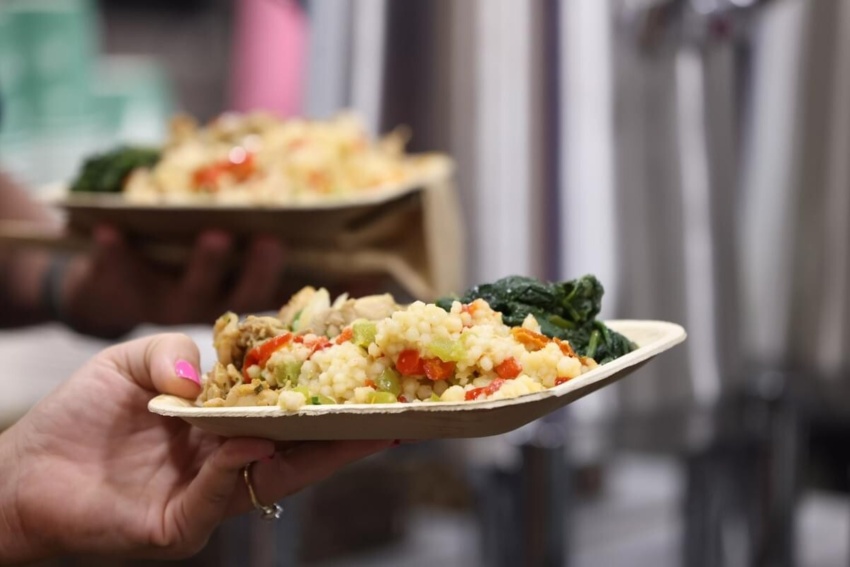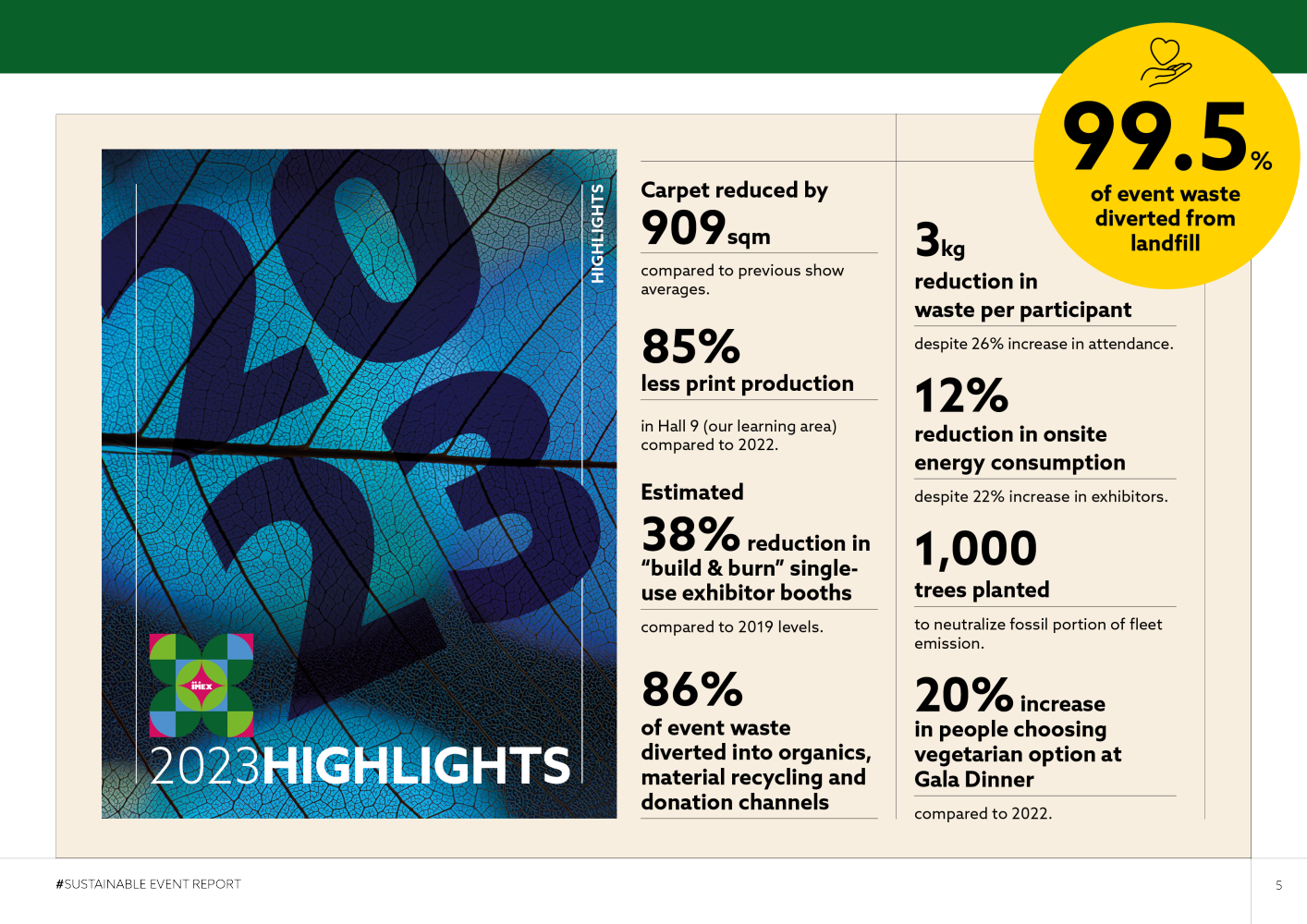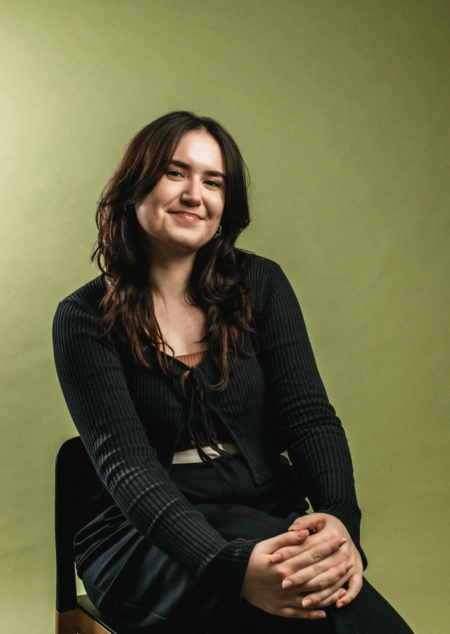How to create more sustainable events
It’s hard to break a habit; people rarely like change.
According to research conducted by Cvent, 78% of event planners in 2024 want to improve sustainability at their events and in their organization.
If you’re one of them, how can you make eco-friendly choices easy and accessible? The answer is nudge theory.
So, what is nudge theory?
Nudge theory is based on the idea that you can influence people’s choices by shaping their environment. For example, in most stores, you’re more likely to find small items closest to the checkout, right under your nose. It’s the design of the environment that nudges you into that unplanned purchase (they’re called impulse buys for good reason).
Sustainability is all about making better choices for us and the planet. Giving people the nudge they need can influence them to make sustainable choices at your event, and beyond.

Sustainable food choices at an IMEX show

Promote sustainable travel to your events
Nudge theory can be broken down into three principles:
Gentle guidance: Think of it as a little push in the right direction. It’s how we can help people make better choices without telling them what to do. You can see this in practice at cafés. To promote healthy eating, cafés might put foods such as fruit at eye level to encourage you to choose them over unhealthier snacks.
Choice architecture: How you shape an environment can impact people’s actions. A good example of this is default options—such as a printer automatically printing double-sided, or providing slightly smaller plate sizes at a buffet to minimize food waste.
Positive reinforcement: Encourage and reward people. For example, you could put up a sign thanking people for recycling. Positive reinforcement makes us more likely to do something again. Charities are particularly good at positive reinforcement. Have you ever seen a message that says something like “62% of people choose to donate X amount or more.”? Or does your favorite brand reward you with extra loyalty points for making a more sustainable choice at the point of sale?
Once you start to see nudge theory in action, you’ll notice it everywhere. And it’s not about changing minds or rocking worldviews. It’s about how we can influence small, incremental decisions to make a bigger, more positive impact.
How can you apply nudge theory to your events?
Before the event:
Make sustainable choices easy. Is your venue accessible by public transportation? You could share a map of the best way to walk, cycle or use public transportation to the venue ahead of time. Make sure sustainable travel is the easiest option.
During the event:
Visual cues are your best friend. Use signage to guide attendees toward sustainable practices. You can help attendees choose recycling instead of a general waste bin by simply putting a directive sign or a smiley face above the recycling bin.
Defaults can influence behavior too. If your focus is reducing the carbon footprint of your catering, you can make the default food choice the greener option. Having a 50% meat-free menu can help influence more sustainable food choices. Make the choice easier. At IMEX Frankfurt 2023, when we asked our Gala Dinner attendees to pre-order their meal, we put the vegetarian option first and explained how it was the more environmentally friendly choice. A gentle nudge toward a more sustainable selection!

Recognition is your new secret weapon. Humans flourish with praise—your attendees are no different! Reward sustainable behaviors. This can be something as simple as a sign thanking people for bringing a reusable water bottle with them. Or letting them know the savings they’ve made on carbon emissions or water usage by choosing a meat-free meal.
Social norms lead the way, and we are social creatures. If we see one person doing something, especially someone we admire, we’re more likely to do it too. Sharing your attendees’ sustainable choices via social media or other communication channels can influence others to do the same. As Seth Godin famously reminds us: “people like us do things like this.”
Now that you have a plan for your event, how can you use nudge theory to get your stakeholders on board?
It’s much the same concept. If you follow the three principles, it looks like:
Choice architecture: Make sure you involve stakeholders in your green initiatives and decision-making. Are they in the room with like-minded colleagues to discuss and agree how sustainable initiatives can change things for the better?
Gentle guidance: Training and education can also influence their decisions and encourage buy-in. Educating them on the how, what and why of sustainability can help them make more eco-friendly decisions and policies.
Positive reinforcement: Provide regular feedback and reports. This can highlight how their decisions have positively impacted the overall picture. We release a Sustainable Event Report to highlight how our attendees and organizational choices result in a zero-waste event.

Embrace the nudge! By using nudge theory, you can create a culture of sustainability that benefits both your organization and the planet.
Remember, it’s not about forcing anyone to do anything—it’s about gentle guidance in the direction of choice. By using this theory, you can make a positive impact on sustainability while creating memorable and impactful events.
Learn more about the IMEX net zero strategy or join us at an IMEX show to see our sustainability strategy in action!


